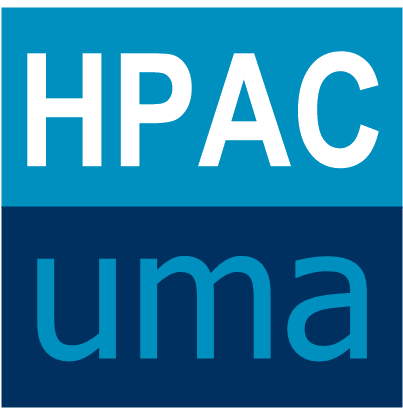Presentation
The High Performance Architecture and Computing Group at the University of Malaga (HPACuma) focuses on the design of hardware/software technologies to improve the efficiency (in terms of performance and power consumption) of modern parallel computers and systems, as well as the design and optimization of algorithms and applications for high performance computers.
This general goal is addressed through two main lines of research:
High performance architectures: Design of programming, compilation, execution and hardware technologies to optimize performance and/or energy when executing parallel applications on computer architectures.
Parallel algorithms and applications: Design and/or optimization of large-scale algorithms and applications where a big amount of data and/or computation is processed.
Highlights
Supercomputing
From the beginning, in early 90's, the group's research activities have been directly related to supercomputing and high performance scientific computing. In fact, having always worked with real applications has allowed us to develop practical architectural solutions.
As a significant result, we can highlight the participation of the group in the creation in 2005 of the Andalusian Network Platform for Scientific and Technological Support in Genomics, Proteomics and Bioinformatics (PAB), that was the result of a collaboration agreement between the Ministry of Education and Science, the Junta de Andalucia and the Universities of Malaga and Cordoba.
Another significant milestone is the participation of the group in the setup of one of the nodes of the Spanish Supercomputing Network (RES), named Picasso. In 1997, the first Picasso supercomputer, an SGI Origin2000, was installed in the University of Malaga. Currently, Picasso is a large-scale supercomputing infrastructure offering more than 30K compute cores, 150 TB main memory, 32 NVIDIA A100 GPUs, 960 TB shared storage, 6 PB object store storage, and a peak performance over 2 PFlops (FP64) and 20 PFlops (AI in GPUs). Recently, the Picasso supercomputer has been included in the map of Singular Scientific and Technical Infrastructures (ICTS).
The UMA RES node also participates in the Quantum Spain project, an initiative of the Ministry of Economy aimed to promote a quantum computing infrastructure in Spain.
Both, PAB and the RES node are located in the Supercomputing and Bioinnovation Center (SCBI) of the University of Malaga.
Technology Transference
The research group has ample experience in technology transfer to the society and productive sector. We have collaborated with companies and institutions such as RTVA, CIEMAT, Brainstorm Multimedia, Auna Supercable, Azcoyen, ADM, Piql, Torresol, Cray, Intel, NVIDIA, ARM, AERTEC, among others.
It should be pointed out the participation of researchers of the group in the formation of the technology company Tedial (Digital Audiovisual Technologies) in 2001, a leading provider of MAM solutions (Media and Content Management) designed to maximize business efficiency and profitability. The head office of Tedial is in the Malaga TechPark (PTA), Malaga.


